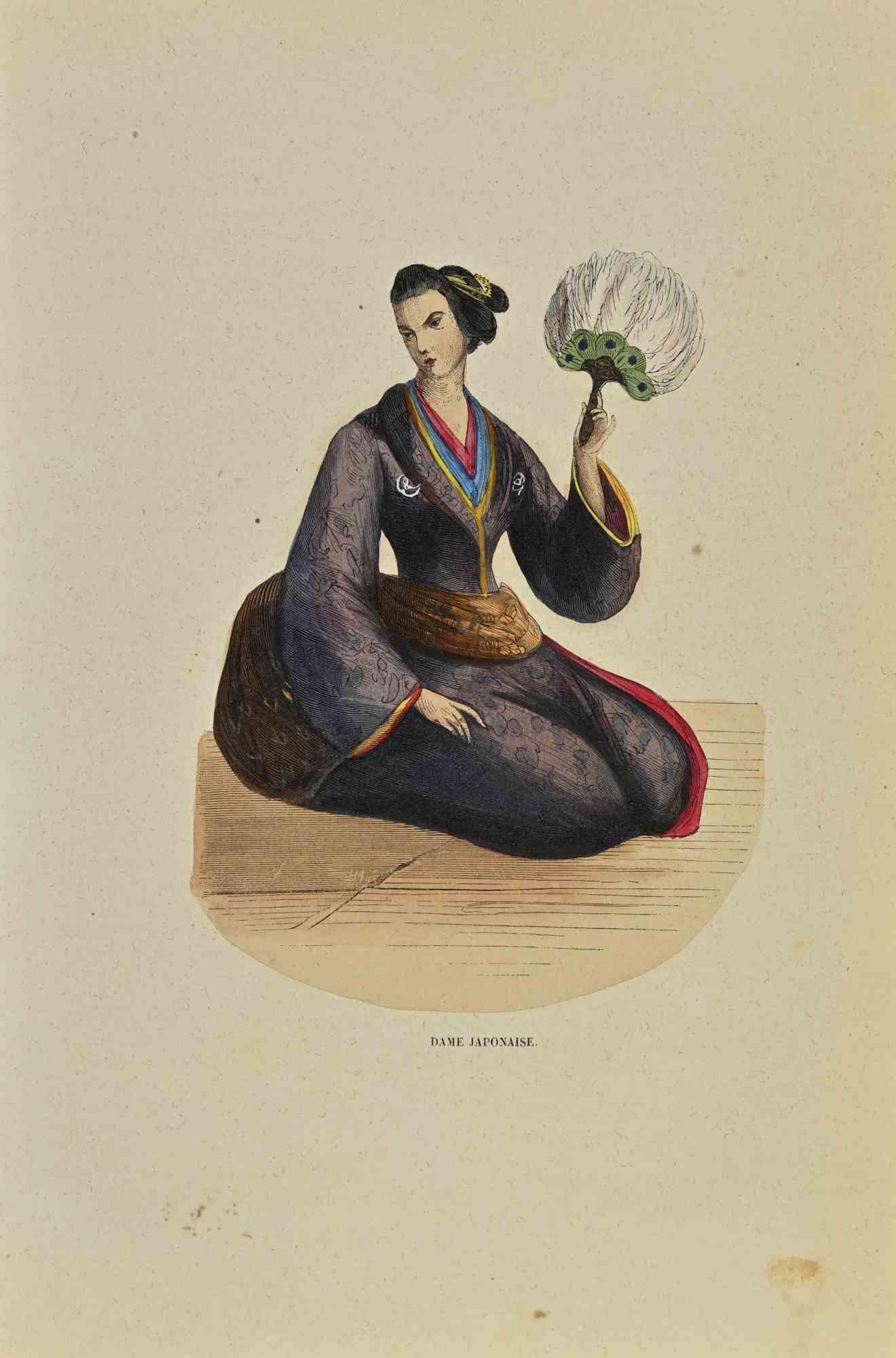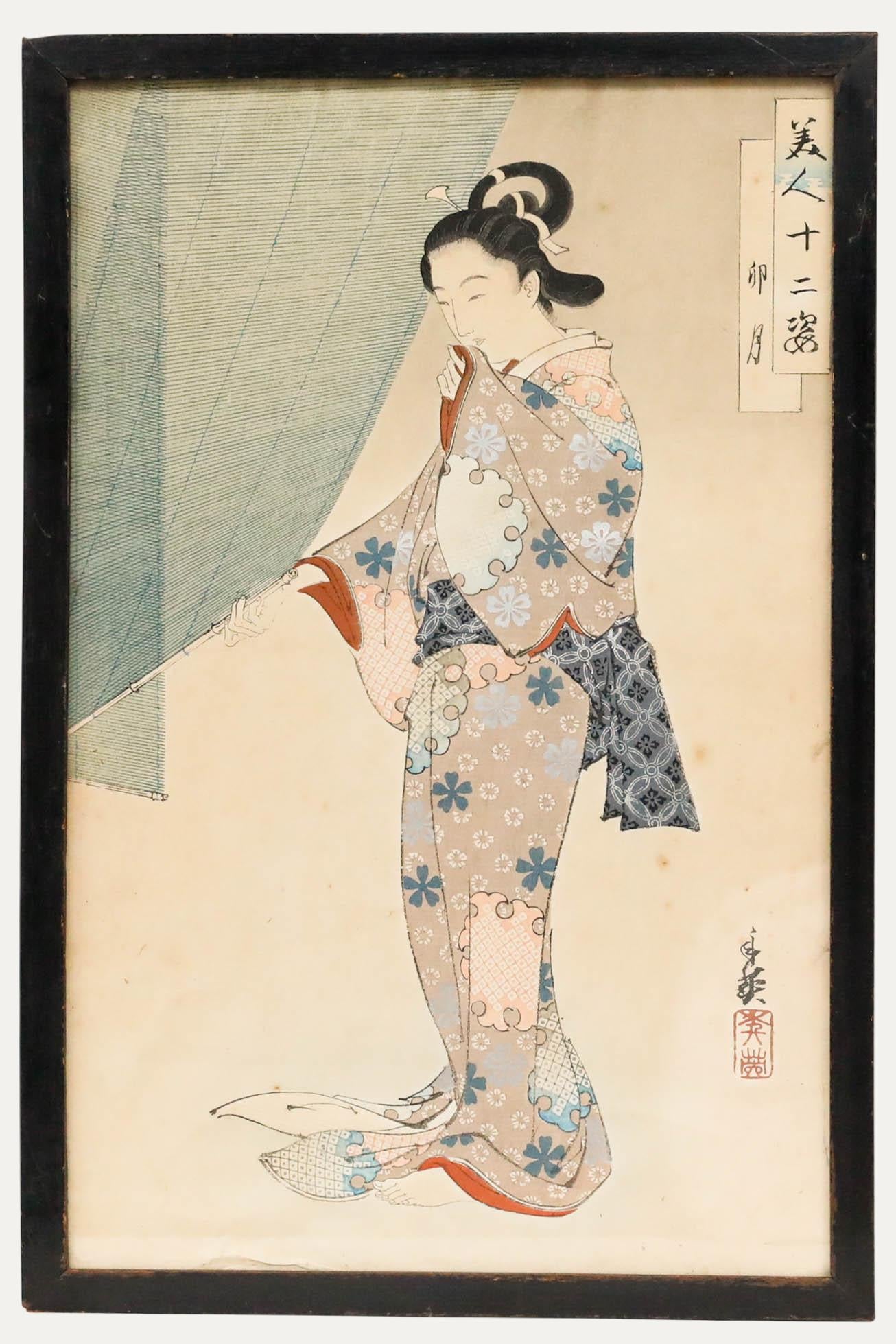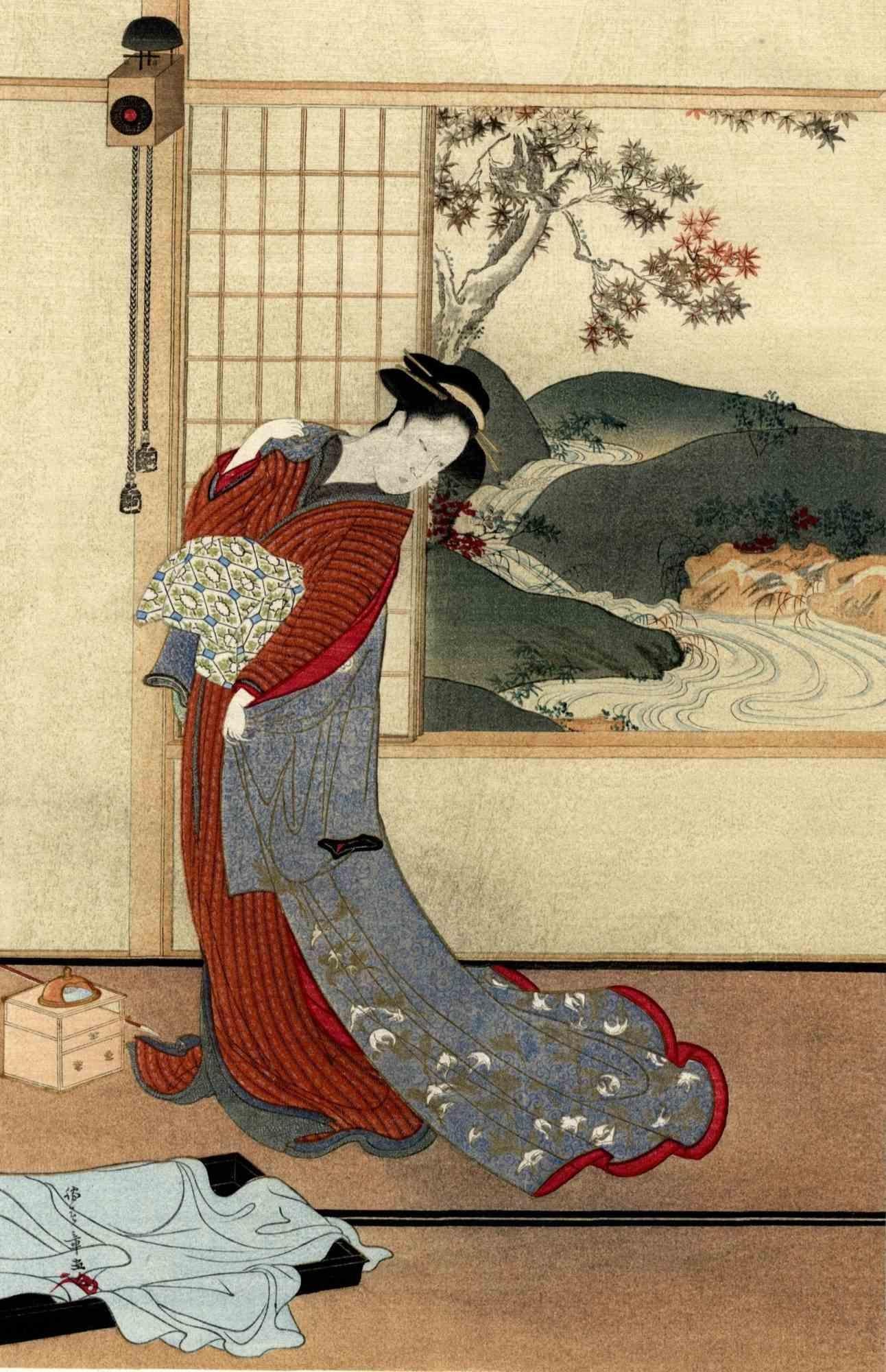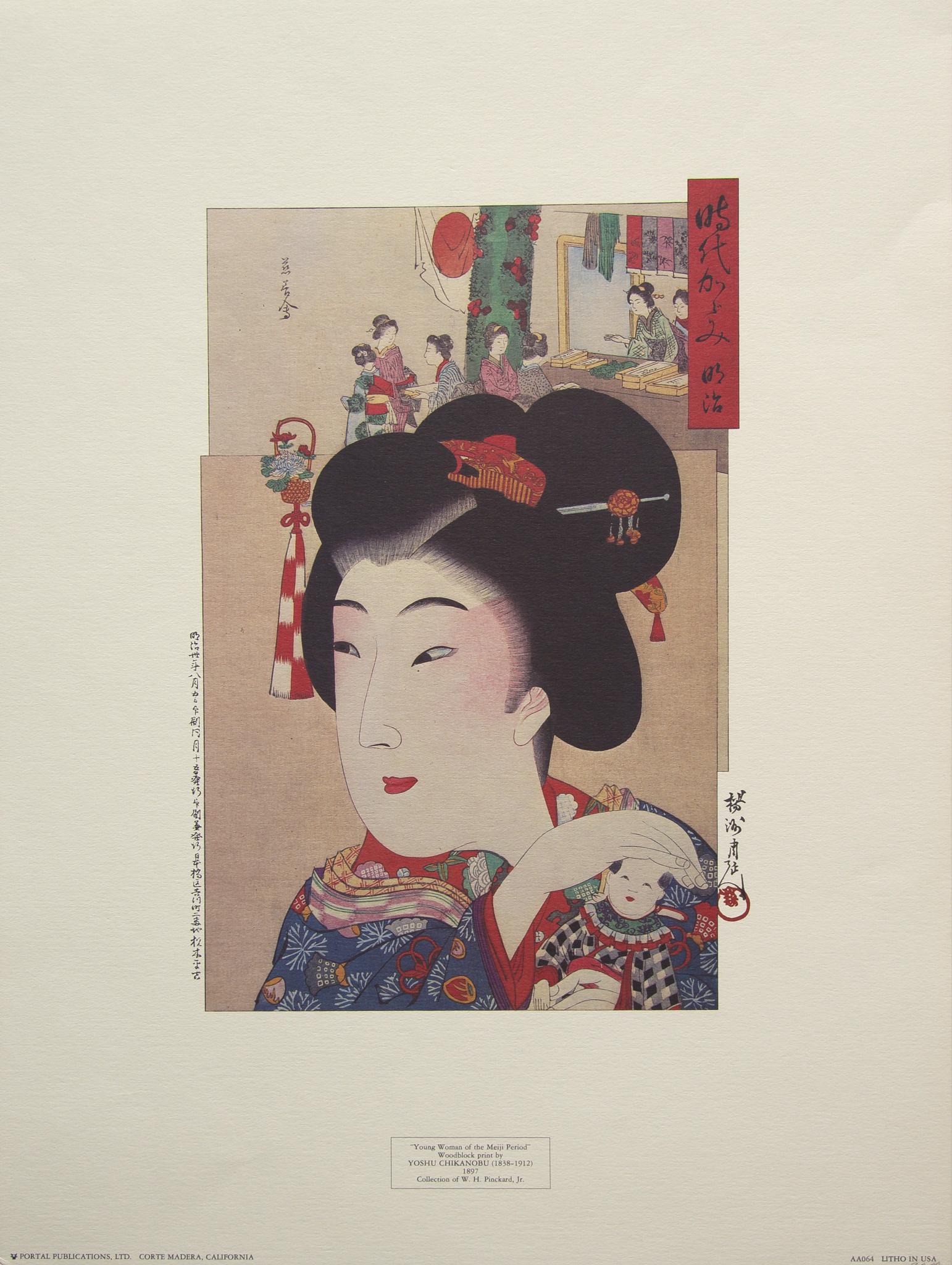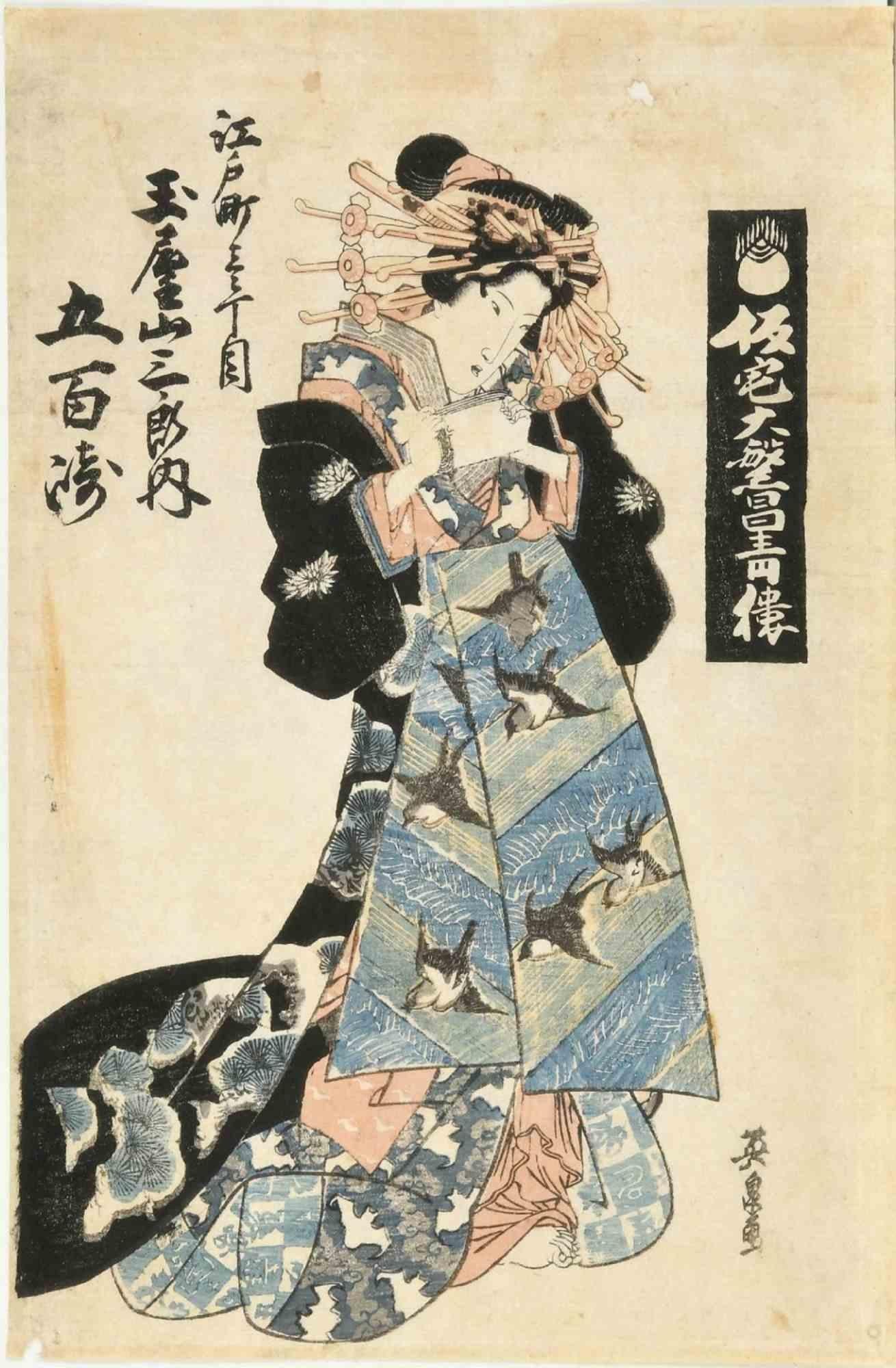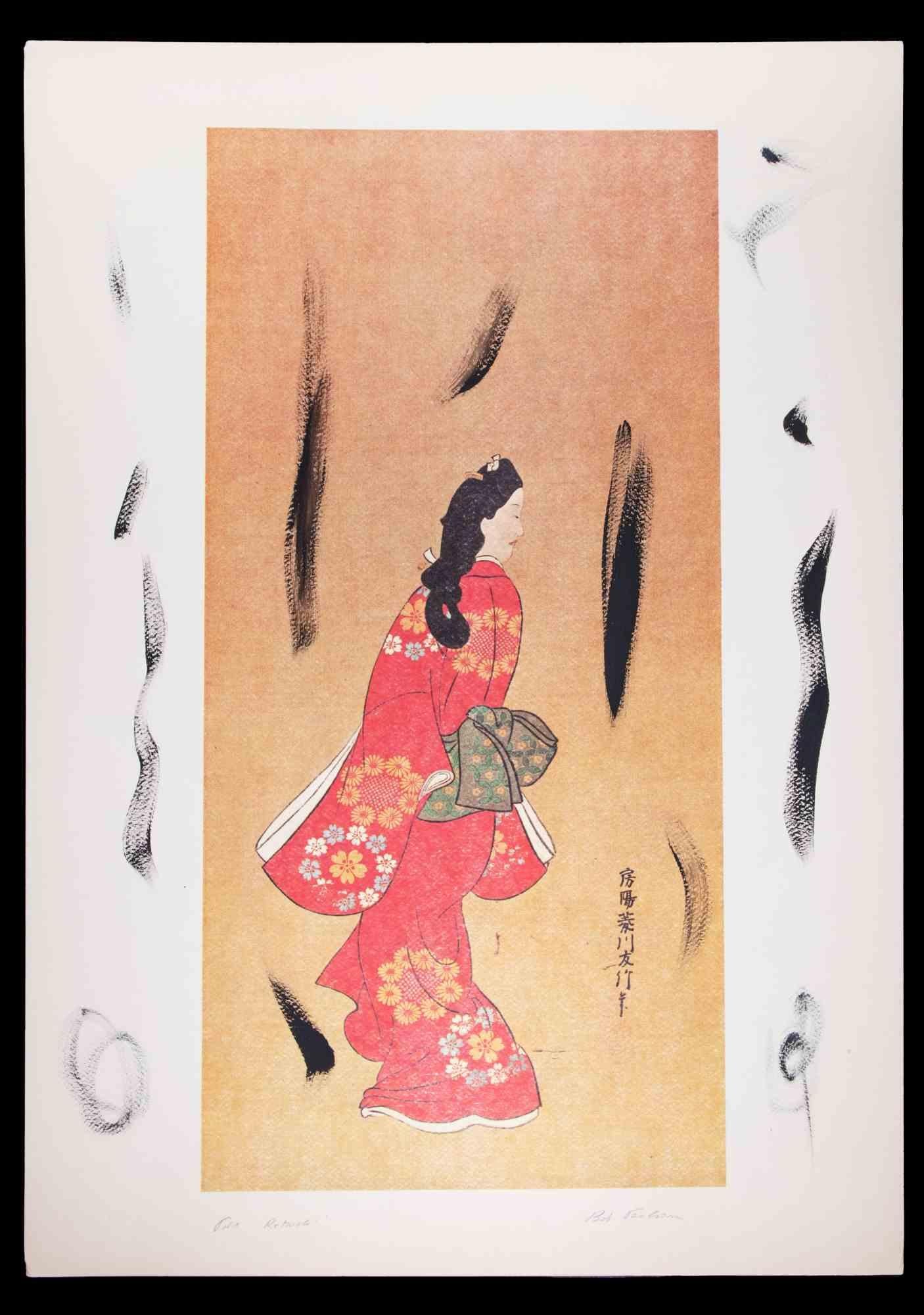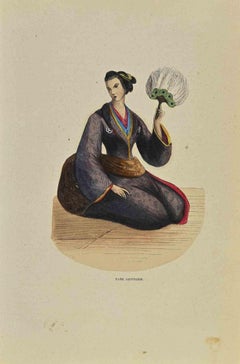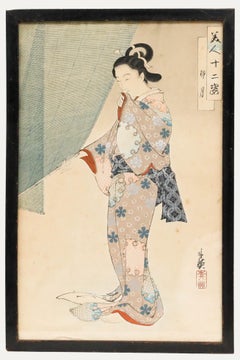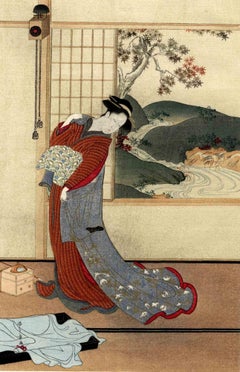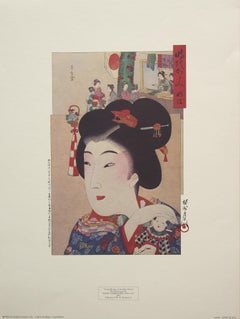Items Similar to Japanese Woman with Fan - Stone lithograph, 1930 (Catalog Akio Uozu #522)
Want more images or videos?
Request additional images or videos from the seller
1 of 4
Kiyoshi HasegawaJapanese Woman with Fan - Stone lithograph, 1930 (Catalog Akio Uozu #522)1930
1930
$448.96
$598.6125% Off
£333.13
£444.1725% Off
€375
€50025% Off
CA$627.04
CA$836.0525% Off
A$680.04
A$906.7225% Off
CHF 357.18
CHF 476.2425% Off
MX$8,260.27
MX$11,013.6925% Off
NOK 4,469.57
NOK 5,959.4325% Off
SEK 4,208.35
SEK 5,611.1325% Off
DKK 2,855.63
DKK 3,807.5025% Off
About the Item
Kiyoshi HASEGAWA
Japanese Woman with Fan, 1930
Original stone lithograph
Printed signature in the plate
On Arches vellum 28 x 22 cm (c. 11 x 9 inch)
REFERENCES : Catalog raisonne (Akio Uozu) #522
Excellent condition
- Creator:Kiyoshi Hasegawa (1891 - 1980, Japanese)
- Creation Year:1930
- Dimensions:Height: 11.03 in (28 cm)Width: 8.67 in (22 cm)
- Medium:
- Movement & Style:
- Period:
- Condition:
- Gallery Location:Paris, FR
- Reference Number:1stDibs: LU46434303141
Kiyoshi Hasegawa
Kiyoshi Hasegawa was a Japanese artist and engraver who spent most of his life in France and whose work is featured at the Yokohama Museum of Art. Born in present-day Yokohama, he moved to France in 1919 (via the United States) to learn copperplate printing, and never returned to Japan.
About the Seller
4.9
Platinum Seller
Premium sellers with a 4.7+ rating and 24-hour response times
Established in 2010
1stDibs seller since 2016
3,737 sales on 1stDibs
Typical response time: <1 hour
- ShippingRetrieving quote...Shipping from: Paris, France
- Return Policy
Authenticity Guarantee
In the unlikely event there’s an issue with an item’s authenticity, contact us within 1 year for a full refund. DetailsMoney-Back Guarantee
If your item is not as described, is damaged in transit, or does not arrive, contact us within 7 days for a full refund. Details24-Hour Cancellation
You have a 24-hour grace period in which to reconsider your purchase, with no questions asked.Vetted Professional Sellers
Our world-class sellers must adhere to strict standards for service and quality, maintaining the integrity of our listings.Price-Match Guarantee
If you find that a seller listed the same item for a lower price elsewhere, we’ll match it.Trusted Global Delivery
Our best-in-class carrier network provides specialized shipping options worldwide, including custom delivery.More From This Seller
View AllWoman in Traditional Japanese Suit Looking at the Sea - Original etching
By Étienne Prosper Berne-Bellecour
Located in Paris, IDF
Etienne Prosper BERNE BELLECOUR (1838-1910)
Woman in Traditional Japanese Suit Looking at the Sea
Original etching
Printed signature i...
Category
Late 19th Century Realist Figurative Prints
Materials
Etching
Woman with a Tall Bouquet of Flowers - Stone lithograph, 1930
By Chas Laborde
Located in Paris, IDF
Chas LABORDE
Woman with a tall bouquet of flowers, 1930
Original stone lithograph
On Arches vellum 28 x 22 cm (c. 11 x 9 inch)
Excellent condition
Category
1930s Modern Interior Prints
Materials
Lithograph
Woman in a Café - Stone lithograph, 1930
Located in Paris, IDF
Maurice BARRAUD
Woman in a Café, 1930
Original stone lithograph
Printed signature in the plate
On Arches vellum 28 x 22 cm (c. 11 x 9 inch)
Excellent...
Category
1930s Modern Figurative Prints
Materials
Lithograph
Laure, Model with Tall Eyes - Stone lithograph, 1930
By Paul Vera
Located in Paris, IDF
Paul VERA
Laure : Model with Tall Eyes, 1930
Original stone lithograph
Printed signature in the plate
On Arches vellum 28 x 22 cm (c. 11 x 9 inch)
Excellen...
Category
1930s Art Nouveau Portrait Prints
Materials
Lithograph
The Poet, Young Woman - Lithograph signed in the plate (Leda 1960)
By Amedeo Modigliani
Located in Paris, IDF
Amedeo MODIGLIANI (1884-1920) (after)
The Poet, Young Woman
Lithograph and stencil after a drawing from the artist
Signed in the plate
On Arches vellum 48 x 36 cm (c. 19 x 14,2 in)
...
Category
1910s Modern Portrait Prints
Materials
Lithograph
Woman with a Rose - Stone lithograph - Mourlot 1965
By Jean Carzou
Located in Paris, IDF
Jean CARZOU
Woman with a Rose
Stone lithograph in colors (printed in Atelier Mourlot)
Printed signature in the plate
On Arches vellum 38 x 28 cm (c. 15 x 11 in)
INFORMATION :
Edit...
Category
1960s Modern Figurative Prints
Materials
Lithograph
You May Also Like
Japanese Lady - Lithograph by Auguste Wahlen - 1844
Located in Roma, IT
Japanese Lady is a lithograph made by Auguste Wahlen in 1844.
Hand colored.
Good condition.
At the center of the artwork is the original title "Dame Japonaise".
The work is part ...
Category
1840s Modern Figurative Prints
Materials
Lithograph
Toshihide Migita (1863-1925) - Japanese Woodblock, Geisha
By Migita Toshihide
Located in Corsham, GB
This ukiyo-e print depicts a geisha elegantly adorned in traditional dress as she lifts the blinds. The work is from the series "Bijin Juni-shi" (The Twelve Figures of the Beauties) ...
Category
Late 19th Century Portrait Prints
Materials
Woodcut
Courtesan in her chamber - Woodcut after Kastukawa Shunsho - Early 20th Century
Located in Roma, IT
Courtesan in her chamber is an original artwork realized in the Early 20th Century after Kastukawa Shunsho.
Reprint.
Good conditions.
Category
Early 20th Century Modern Figurative Prints
Materials
Woodcut
"Young Woman of the Meiji" by Yoshu Chikanobu, Lithographic Print.
By Yoshu Chikanobu
Located in Chesterfield, MI
Published by Portal Publications.
Printed in USA
Good Condition
24 x 18
Category
20th Century Portrait Prints
Materials
Lithograph
$120 Sale Price
20% Off
Courtesan - Woodcut by Keisai Eisen - 1830
By Keisai Eisen
Located in Roma, IT
Courtesan is an original modern artwork realized by Keisai Eisen in the first half of the 19th Century.
Signed and inscribed on plate.
Total dimension...
Category
1830s Modern Portrait Prints
Materials
Paper, Woodcut
Geisha - Lithograph by Bob Paulson - 1970s
Located in Roma, IT
Geisha is an original artwork realized by Bob Paulson during the 1970s.
The technique used by the artist is lithograph, retouchè.
Good condition.
Artist Proof, Hand signed.
Edito...
Category
1970s Contemporary Figurative Prints
Materials
Lithograph
